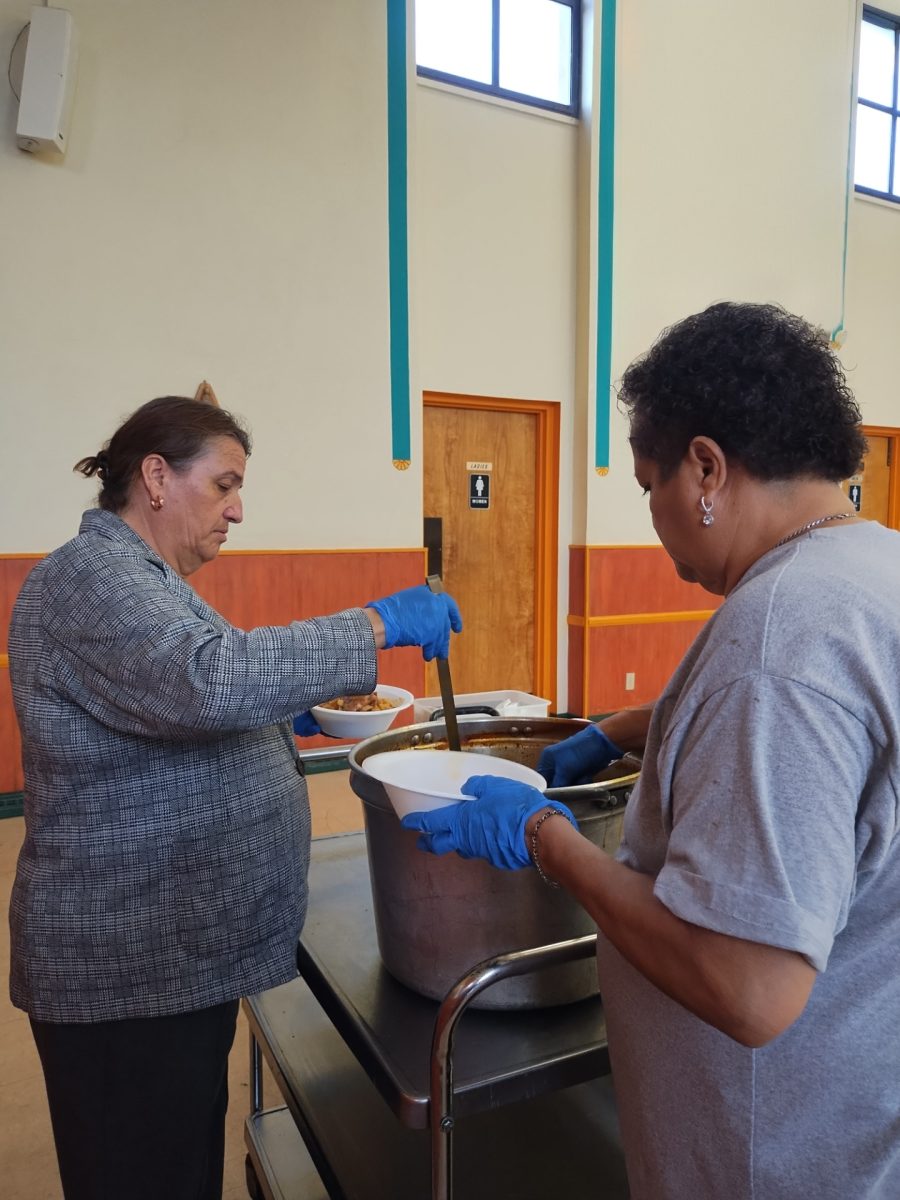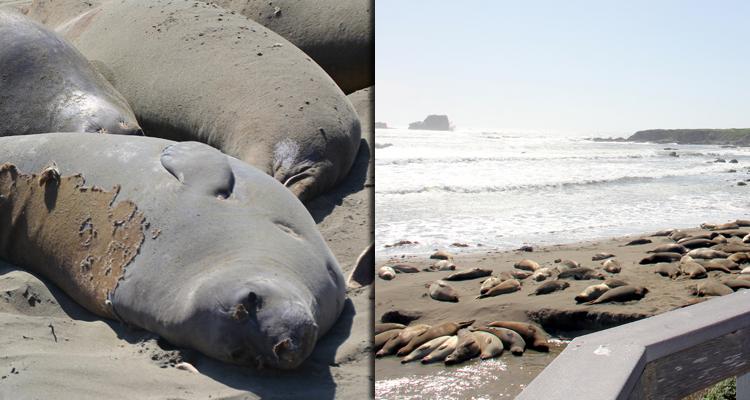By Haley Boyajian
Special Contributor
Journalism 201A
A mother otter cuddles her nearly grown baby close to her, bathing in the sunshine coating the Morro Bay Harbor while several other otters play around her in the blue waters.
Francine Sacco, a Tucson Arizona native, watches the moms and pups play through her binoculars. Â Sacco and her husband are vacationing in Morro Bay, as they do often.
“This is our favorite place because the sea otters are so special,†Sacco explained. “They are pretty amazing.â€
California’s southern sea otter has been listed as threatened on the endangered species list since 1977. However, recently Morro Bay has witnessed an increase in the number of otters inside of the bay.
“The marked number has increased over the last couple of years,†explained Mike Harris, a sea otter biologist and senior environmental scientist for the state Department of Fish and Wildlife.
The population has been increasing by roughly three percent per year over the last five years, the United States Geological Survey states. The population index, which was started in 1982, has reached its all time high of 3,090. However, the population index must remain at 3,090 for three consecutive years in order for the sea otters to be removed from the endangered species list. Â
In 2015, a program called Sea Otter Savvy was established with the focus of reducing human contact with the Sea Otters as the numbers began to increase. Program coordinator for Sea Otter Savvy, Gena Bentall, explains there is a range wide census that occurs every spring. In May, the official count was 36 independent otters and nine pups, which is significantly higher than the past two decades.
Sea Otter Savvy also has a citizen science team that does weekly counts in San Luis Obispo County, mainly in Morro Bay. Their numbers tend to hover around the same number as the official count.
However, there is a “really important distinction†between an overall population growth and otters moving around and finding new places they like to be, according to Bentall.
“Otters redistributing themselves is not the same as population growth,†explained Bentall.  “We can not say for sure which one is occurring until the new survey in May.â€
It is likely that more otters have decided to use the bay because they have found a reliable food source, although that cannot be said with certainty.
The exact cause of the population increase in sea otters on the California Coast is unknown.
“A number of factors could come into play,†Harris explained.
“It is hard to say with any certainty. We can have theories and collect evidence to help prove those theories,†Bentall said.
There is speculation that a main factor in the population increase is an increase in prey. The increase in prey is thought to have originated with a mysterious sea star disease that affected sea stars all over the central coast.
Sea stars and sea otters both prey on sea urchins.
“Food is what really limits survival,†Bentall said. “With more food, more pups survive.â€
She explained there is as study in progress to test the sea star theory.
“Sharks are the primary source of sea otter mortality,†Bentall said.
When Bentall first began studying sea otters 15 years ago, only 15 percent of otter mortalities could be attributed to sharks. The current rate of mortality due to sharks hovers between 50 and 60 percent. Â
Estero Bay, which is the area stretching from Point Estero in the north to Point Buchon in the south, is a hot spot for shark bites. This could also have something to do with the otters taking shelter in the bay. There are fewer sharks inside of Morro Bay, making it a safer area for the otters to live, Bentall explained.
‘The uptick in sea otters is fairly recent, putting a lot of otters in contact with a lot of people,†Bentall said. “Our goal is to make sure people on the water are responsible and do not disturb the otters.â€
Sea Otter Savvy offers information on why it is important to protect the sea otters in order to educate people that partake in recreation activities in Morro Bay.



![A raft of sea otters at Target Rock. Scenes from a walk near Morro Rock, including surfer, girl wading, sea otters, boater, and a foggy harbor scene. 31 Oct. 2011, Morro Bay, CA.
Photo © 2011 “Mike†Michael L. Baird, mike {at] mikebaird d o t com, flickr.bairdphotos.com, Canon EOS 5D Mark II 21.1MP Full Frame CMOS Digital SLR Camera with Canon EF 300mm f/2.8L IS USM Telephoto Lens for Canon SLR Cameras, with no Circular Polarizer, handheld, RAW.
To use this photo, see access, attribution, and commenting recommendations at http://www.flickr.com/people/mikebaird/#credit - Please add comments/notes/tags to add to or correct information, identification, etc. Please, no comments or invites with badges, unrelated images, flashing icons, links to your photos, multiple invites, or invites with award levels and/or award/post rules. Critique is always welcomed.](https://cuestonian.com/wp-content/uploads/2017/04/6299860051_b3c7e84b95_o-1.jpg)









